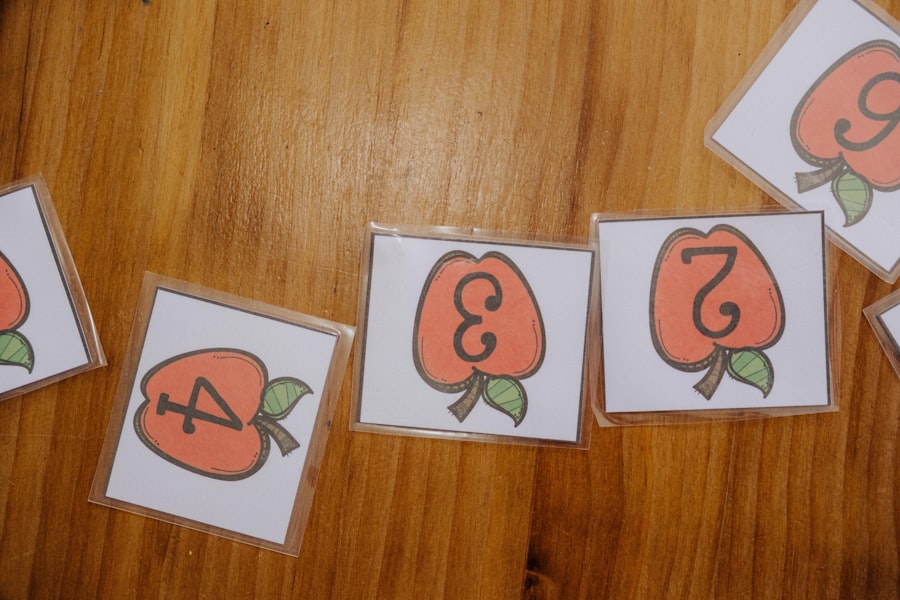Bingo: The Ultimate Social Game for All Ages
Description
Bingo has a rich and storied history that traces its origins back to 16th-century Italy. The game, known as “Il Gioco del Lotto d’Italia,” was initially a lottery game that involved players selecting numbers from a pool. This early version of bingo was played primarily by the upper classes and was a form of entertainment that combined chance with social interaction.
As the game gained popularity, it spread to France and then to Germany, where it was adapted into a children’s game called “Beano.” In this version, players would use beans to cover their numbers on a card, and the excitement of winning was palpable. The transition of bingo to the United States occurred in the 1920s, where it underwent significant transformations. The game was introduced at fairs and carnivals, quickly becoming a popular pastime.
In 1929, a toy salesman named Edwin S. Lowe stumbled upon the game while visiting a carnival in Georgia. Captivated by its potential, he created a version of the game that included 12 different cards, each with a unique combination of numbers.
Lowe’s innovation led to the mass production of bingo cards, and he marketed the game as “Beano.” However, during one fateful game, a player accidentally shouted “Bingo!” instead of “Beano,” and the name stuck. This serendipitous moment marked the beginning of bingo’s rise as a staple in American culture.
Key Takeaways
- Bingo originated in Italy in the 16th century and made its way to the United States in the 1920s, where it became popular as a fundraising game.
- The rules of bingo are simple: players mark off numbers on their cards as they are called out, and the first to complete a specific pattern wins. Etiquette includes being respectful and attentive during the game.
- Playing bingo can provide mental stimulation and social interaction, making it a beneficial activity for people of all ages.
- Bingo has evolved to include variations such as traditional, themed, and even high-tech online and mobile versions.
- Bingo events and community gatherings bring people together, fostering a sense of camaraderie and fun for all participants.
How to Play Bingo: Rules and Etiquette
Playing bingo is relatively straightforward, making it accessible to individuals of all ages. The game typically involves a bingo card featuring a grid of numbers arranged in five columns labeled B, I, N, G, and O. Each column contains a specific range of numbers; for instance, the B column has numbers from 1 to 15, I from 16 to 30, N from 31 to 45, G from 46 to 60, and O from 61 to 75.
Players receive one or more cards and mark off numbers as they are called out by a designated caller. The objective is to complete a predetermined pattern—such as a straight line, diagonal line, or full card—before anyone else.
Players should remain attentive and quiet while numbers are being called to avoid distractions.
When someone achieves bingo, they should raise their hand or call out loudly to alert the caller.
After verification of the win, players often celebrate with cheers or applause, fostering a sense of community among participants. Understanding these social norms enhances the overall atmosphere of the game and contributes to its enduring popularity.
The Benefits of Playing Bingo: Mental Stimulation and Social Interaction

Engaging in bingo offers numerous benefits that extend beyond mere entertainment. One of the most significant advantages is mental stimulation. The game requires players to concentrate on their cards and quickly identify called numbers, which can enhance cognitive functions such as memory and attention span.
Research has shown that activities involving pattern recognition and quick decision-making can help keep the brain sharp, particularly for older adults. Regular participation in bingo can serve as a fun way to challenge oneself mentally while enjoying the thrill of competition. In addition to cognitive benefits, bingo serves as an excellent platform for social interaction.
The communal aspect of the game fosters connections among players, whether they are friends, family members, or strangers. Many bingo halls and community centers host regular games that bring people together, creating opportunities for socialization and camaraderie. For seniors, in particular, bingo can combat feelings of loneliness and isolation by providing a welcoming environment where they can meet new people and engage in friendly banter.
The laughter and shared excitement during gameplay contribute to building relationships that extend beyond the bingo hall.
Bingo Variations: From Traditional to Themed Games
| Bingo Variation | Description |
|---|---|
| Traditional Bingo | The classic game with 75 or 90 numbers called out at random |
| Speed Bingo | A faster version of traditional bingo with shorter game times |
| Themed Bingo | Bingo games with themes such as holidays, movies, or TV shows |
| Electronic Bingo | Bingo played on electronic devices with auto-daubing features |
Bingo has evolved into various forms over the years, with traditional games coexisting alongside innovative themed variations that cater to diverse interests. Traditional bingo typically adheres to the classic 75-ball format in North America or the 90-ball format commonly played in the UK. However, themed bingo games have gained traction in recent years, incorporating elements from popular culture, holidays, or specific interests.
For instance, Halloween-themed bingo might feature spooky images or words related to the holiday, while music-themed bingo could include song titles or artist names. These variations not only add excitement but also attract different demographics to the game. For example, family-friendly bingo nights may include cartoon characters or educational themes that appeal to children and parents alike.
Additionally, themed events often incorporate creative prizes that align with the theme, enhancing the overall experience for participants. This adaptability has allowed bingo to remain relevant in an ever-changing entertainment landscape while appealing to new generations of players.
Bingo and Technology: Online and Mobile Versions
The advent of technology has significantly transformed how bingo is played and experienced. Online bingo platforms have emerged as popular alternatives to traditional bingo halls, allowing players to enjoy the game from the comfort of their homes. These platforms offer various features such as chat rooms where players can interact with one another while playing, creating a sense of community similar to that found in physical bingo halls.
Online bingo also provides players with access to numerous games at any time of day or night, catering to different preferences and schedules. Mobile applications have further revolutionized the game by making it even more accessible. Players can download bingo apps on their smartphones or tablets and participate in games on-the-go.
Many mobile versions incorporate interactive elements such as animated graphics and sound effects that enhance the gaming experience. Additionally, some apps offer social features that allow players to connect with friends or join virtual bingo parties. This integration of technology not only broadens the reach of bingo but also attracts younger audiences who may prefer digital entertainment options.
Bingo Events and Community Gatherings: Bringing People Together

Bingo events often serve as significant community gatherings that foster connections among participants while raising funds for various causes. Many nonprofit organizations and charities host bingo nights as a means of fundraising, where proceeds from ticket sales go towards supporting their missions. These events typically draw large crowds and create an atmosphere filled with excitement and anticipation as players vie for prizes while contributing to a worthy cause.
Community centers frequently organize regular bingo nights that encourage local residents to come together for an evening of fun and socialization. These gatherings often feature themed nights or special promotions that enhance participation and engagement. For instance, holiday-themed events may include festive decorations and seasonal prizes, while potluck-style bingo nights invite attendees to bring food items to share with others.
Such initiatives not only promote community spirit but also provide opportunities for individuals to forge new friendships and strengthen existing bonds.
Bingo for All Ages: Why It’s a Game for Everyone
One of the most appealing aspects of bingo is its universal appeal; it is a game that transcends age barriers and can be enjoyed by people from all walks of life. Children can participate in simplified versions that focus on colors or shapes rather than numbers, making it an excellent educational tool for developing counting skills and pattern recognition. Family-oriented bingo games often encourage intergenerational play, allowing grandparents, parents, and children to bond over shared experiences.
For adults and seniors, bingo offers an engaging way to socialize while enjoying friendly competition. Many retirement communities host regular bingo sessions specifically designed for older adults, providing them with opportunities for mental stimulation and social interaction in a relaxed environment. The game’s simplicity ensures that everyone can participate without feeling overwhelmed by complex rules or strategies.
This inclusivity makes bingo an ideal choice for family gatherings, community events, or casual get-togethers among friends.
The Future of Bingo: How the Game Continues to Evolve
As society continues to evolve technologically and culturally, so too does the game of bingo. The future promises exciting developments as new trends emerge within the gaming industry. One notable trend is the integration of augmented reality (AR) into bingo experiences.
AR technology could enhance gameplay by overlaying digital elements onto physical cards or environments, creating immersive experiences that captivate players’ attention. Moreover, as online gaming becomes increasingly popular, we may see more innovative formats that blend traditional gameplay with modern technology. For instance, live-streamed bingo events could allow players from around the world to participate simultaneously while interacting through chat features or video calls.
This evolution reflects broader shifts in how people engage with games and entertainment in an increasingly digital world. In conclusion, bingo’s rich history and adaptability have solidified its place as a beloved pastime across generations. Whether played in traditional halls or through online platforms, its ability to foster social connections while providing mental stimulation ensures that it will continue to thrive in various forms for years to come.
If you’re a fan of bingo, you may also enjoy exploring the world of online gaming. Check out this article on Taya365 that discusses the latest online games for gaming enthusiasts. Whether you’re into sports or casino games, there’s something for everyone in the online gaming world. So why not give it a try and see what new and exciting games you can discover!
FAQs
What is bingo?
Bingo is a game of chance in which players mark off numbers on cards as the numbers are drawn randomly by a caller. The first player to mark off a predetermined pattern of numbers calls out “Bingo!” and wins the game.
How is bingo played?
Bingo is typically played with a set of numbered balls or a random number generator. Players have cards with a grid of numbers on them, and they mark off the numbers as they are called. The first player to complete a specific pattern on their card wins.
What are the common patterns in bingo?
Common patterns in bingo include straight lines (horizontal, vertical, or diagonal), four corners, and blackout (covering all the numbers on the card).
Where is bingo commonly played?
Bingo is commonly played in dedicated bingo halls, community centers, and online. It is also a popular game at fundraisers, social events, and retirement communities.
Is bingo a game of skill or luck?
Bingo is primarily a game of luck, as the numbers are drawn randomly and players have no control over which numbers are called. However, players can increase their chances of winning by playing multiple cards or using strategic techniques.
What are the prizes in bingo?
Prizes in bingo can vary depending on the game and the number of players. Common prizes include cash, gift cards, and merchandise. In some cases, a portion of the proceeds may go to a charitable cause.





